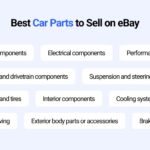Being a responsible car owner goes hand in hand with proactive maintenance. However, delving into the mechanical intricacies of your vehicle can feel overwhelming when you’re trying to understand the components involved in keeping it running smoothly and making informed repair decisions.
One crucial aspect of car ownership is understanding which parts can pose a risk if they malfunction and which are relatively inexpensive to maintain. Gaining a solid understanding of the various car parts will empower you to keep your vehicle in top condition and better grasp the costs associated with its upkeep.
Understanding the anatomy of your car and its various components is key to responsible car ownership and maintenance.
Let’s embark on a journey to explore the inner workings of a car, from the smallest spark plug to the robust engine block, and shed light on the essential components that constitute the anatomy of any automobile. If you’ve ever wondered “How Many Parts On A Car?”, you’re about to discover the answer lies in a complex and fascinating network of systems.
Delving into Engine Components
Maintaining your car engine through regular servicing is crucial for preserving its value and minimizing running costs.
The engine is often considered the heart of a car, and it’s composed of numerous intricate parts working in harmony. Let’s break down some key engine components:
Cylinder Block and Pistons: The Powerhouse Foundation
The cylinder block serves as the robust foundation of the engine, a solid structure housing individual cylinders. These cylinders are hollow tubes where controlled combustion takes place, the very process that generates the power to move your car.
Within these cylinders, pistons move up and down, held securely by piston rings. Pistons play a vital role in converting the explosive energy from combustion into mechanical force, which ultimately propels the vehicle. This piston-cylinder interaction is fundamental, making it the primary component responsible for generating automotive power.
Crankshaft and Camshaft: Orchestrating Motion and Timing
Deep within the engine’s core, the crankshaft and camshaft work in tandem. The crankshaft’s crucial role is to convert the linear, up-and-down motion of the pistons into rotational energy. This rotational energy is then harnessed to provide the driving force for the vehicle.
Simultaneously, the camshaft meticulously manages the timing of valve openings and closings. This precise timing ensures that the combustion process is seamless and efficient. Working in perfect synchronicity, the crankshaft and camshaft orchestrate the internal combustion events with accurate movements, contributing to the smooth and propulsive motion of your car.
Intake and Exhaust Manifolds: The Lungs of Your Engine
Think of the intake and exhaust manifolds as the lungs of your car, responsible for managing airflow in and out of the engine. The intake manifold draws in the essential oxygen required for combustion, while the exhaust manifold efficiently expels the gases produced after combustion, directing them out through the exhaust system.
Together, these manifolds optimize the performance of the car’s internal combustion engine, ensuring a delicate balance between power and efficiency. It’s important to note that electric vehicles (EVs), unlike traditional cars, do not have intake and exhaust manifolds as they operate without internal combustion engines.
Powertrain and Gearboxes: Transferring and Managing Power
The gearbox, a critical component, especially in manual cars, requires smooth operation and careful maintenance to ensure longevity.
The powertrain system is responsible for transmitting the power generated by the engine to the wheels, enabling movement. Gearboxes, also known as transmissions, are a crucial part of this system. Let’s explore different types of gearboxes:
Different Types of Gearboxes (Transmissions)
Manual Gearboxes: Driver Control at Your Fingertips
Manual gearboxes put the driver firmly in control of gear selection. They require the driver to manually engage and disengage gears using a clutch pedal and gear stick.
This manual operation allows drivers to respond directly and constantly to changing driving conditions, such as road surface slipperiness, acceleration needs, and deceleration requirements. Manual gearboxes offer a direct and engaging driving experience, favored by those who enjoy a more connected feel with their vehicle.
Automatic Gearboxes: Seamless and Effortless Shifting
Automatic gearboxes are designed to simplify driving by automatically shifting gears smoothly and seamlessly, without any driver intervention. This means no clutch pedal or gear stick operation is needed.
At the heart of automatic gearboxes is a torque converter, a fluid coupling mechanism that ensures gear changes are smooth and almost imperceptible. Automatic transmissions prioritize convenience and ease of driving, particularly in stop-and-go traffic.
Continuously Variable Transmissions (CVTs): The Pinnacle of Smoothness
Continuously Variable Transmissions (CVTs) represent the most advanced evolution in gearbox technology. Utilizing a system of pulleys and belts, CVTs offer an almost infinite range of gear ratios. This results in exceptionally smooth and continuous acceleration, eliminating the stepped gear changes found in traditional transmissions.
This innovative design not only maximizes fuel efficiency but also dynamically adapts to varying driving conditions. CVTs are increasingly becoming a popular choice for their high performance and efficiency.
Differential and Driveshaft: Distributing Power to the Wheels
Within a car’s power system, the differential and driveshaft collaborate to perform distinct yet interconnected roles. The driveshaft acts as the conduit, carrying the power generated by the transmission to the wheels.
The differential’s key function is to ensure that power is distributed evenly to the wheels, especially when turning. This allows the wheels to rotate at different speeds, which is essential for smooth cornering. Working together, the driveshaft and differential form a harmonious system that enables your car’s controlled and efficient motion.
Clutch and Torque Converter: Engaging and Transferring Power
In the intricate world of gears and transmissions, the clutch and torque converter play vital roles in managing power flow. In manual transmissions, the clutch is essential for enabling the driver to engage and disengage gears, providing precise control over gear changes.
Conversely, in automatic transmissions, the torque converter takes on the responsibility of smoothly transferring power from the engine to the transmission. This ensures that gear shifts are seamless and almost imperceptible, contributing to a smooth and dynamic driving experience.
Fuel and Ignition Systems: Igniting the Combustion Process
Maintaining your internal combustion engine car’s fuel system is paramount for optimal performance and preventing dangerous breakdowns.
The fuel and ignition systems are critical for starting and running an internal combustion engine. Let’s examine some key components:
Fuel Injection System: Precision Fuel Delivery
A cornerstone of modern engines, the fuel injection system ensures that fuel is delivered optimally for efficient combustion. Fuel injectors precisely spray a metered amount of fuel into the engine cylinders at the optimal moment, significantly enhancing engine efficiency and power output.
Fuel injection systems have effectively replaced carburettors, which were previously prone to breakdowns due to clogging and wear. Fuel injectors offer superior fuel distribution, leading to improved engine performance and reduced emissions.
Spark Plugs and Ignition Coils: The Spark of Life
The ignition system is comprised of spark plugs and ignition coils, working in concert to ignite the air-fuel mixture within the engine cylinders. The spark plug generates the crucial spark needed to initiate combustion, while ignition coils amplify the voltage from the car’s electrical system to create a spark strong enough to ignite the fuel.
The synchronized operation of spark plugs and ignition coils is essential for efficient and rapid ignition. This, in turn, is critical for optimal engine performance, quick responsiveness, and maximizing fuel efficiency.
Throttle Body and Air Intake System: Controlling the Engine’s Breath
The throttle body and air intake system work together to regulate the amount of air flowing into the engine. The throttle body acts as a valve, controlling the volume of air entering the engine based on the driver’s accelerator pedal input. The air intake system ensures that the engine receives a clean and consistent supply of air, free from contaminants.
By working in tandem, the throttle body and air intake system effectively manage the engine’s “breathing,” a critical aspect for achieving peak power output, optimal fuel efficiency, and overall engine performance.
Cooling and Lubrication: Maintaining Optimal Engine Temperature
Radiator and Cooling Fans: Preventing Overheating
The radiator and cooling fans are the primary defense mechanisms against engine overheating in internal combustion engines.
The radiator’s role is to dissipate heat from the engine coolant as it circulates through the cooling system. Cooling fans enhance this process by increasing airflow across the radiator, further expelling excess heat. Together, they ensure the engine maintains a stable and optimal operating temperature, protecting it from damage and promoting efficient performance.
Water Pump and Hoses: Circulating Coolant
Two additional critical components of the cooling system are the water pump and hoses. The water pump is responsible for circulating the coolant throughout the engine and cooling system. As the coolant flows, it absorbs heat from the engine. Hoses act as pathways, allowing the coolant to travel seamlessly between different parts of the cooling system and the engine.
EV Battery Cooler System: Cooling the Electric Heart
Electric vehicles (EVs) utilize a different cooling approach, primarily focused on managing the temperature of the battery pack and the electric motor. The battery cooler, analogous to a traditional radiator, dissipates heat from the coolant that circulates around the battery pack. Cooling systems, often involving fans, further enhance heat expulsion.
Maintaining an optimal temperature range for the battery and electric motor is paramount in EVs. Proper thermal management is essential for maximizing battery longevity, ensuring efficient operation, and maintaining overall vehicle performance.
Oil Pump and Oil Filter: Ensuring Smooth Operation and Longevity
The oil pump plays a crucial role in circulating engine oil throughout the engine. This continuous circulation ensures that all moving components are adequately lubricated, minimizing friction and enabling smooth operation. Simultaneously, the oil filter diligently removes impurities and contaminants from the engine oil, keeping it clean and effective.
Together, the oil pump and oil filter work to extend the engine’s lifespan by reducing wear and tear and maintaining optimal lubrication.
Electrical System: Powering the Car’s Functions
The electrical system is central to the operation of almost every part of your car, from the engine management to interior accessories.
The electrical system is the nerve center of a modern car, powering a vast array of functions. Key components include:
Battery: The Initial Power Source
The car battery serves as the vehicle’s primary source of electrical energy. It provides the initial power needed to start the engine and supports all electrical functions when the engine is not running. Crucially, all cars, including EVs, rely on batteries, although EVs have much larger, high-voltage batteries for propulsion. If a car battery malfunctions or loses its charge-holding capacity, it will typically need to be replaced.
Alternator: Recharging and Powering
The alternator is a vital component that converts mechanical energy from the engine’s rotation into electrical energy. This generated electricity serves two primary purposes: recharging the battery while the engine is running and providing power to the car’s electrical system and components.
Importantly, the alternator also regulates the voltage output to maintain a consistent electrical supply throughout the vehicle. This voltage regulation prevents overcharging of the battery and ensures that all electrical components receive the correct and stable amount of power they require.
Starter Motor and Solenoid: Initiating Engine Start
The starter motor and solenoid work together in a coordinated manner to initiate the engine starting process. The solenoid acts as a switch, activating the starter motor when the ignition key is turned. The starter motor then engages and turns the engine’s crankshaft, effectively “cranking” the engine to kickstart the combustion process.
This synchronized effort transforms electrical energy from the battery into mechanical motion, which is essential for getting the engine running.
Wiring Harness and Fuses: Electrical Pathways and Protection
The wiring harness acts as the central nervous system of the car’s electrical system, channeling electricity throughout the vehicle to connect and power various components. Fuses are strategically placed within the wiring harness to act as safety devices, protecting the electrical system from potential damage caused by overloads or short circuits.
Together, the wiring harness and fuses ensure a safe, organized, and reliable flow of electrical power throughout the car, preventing potential malfunctions and safeguarding the entire electrical network.
Suspension and Steering: Ensuring a Smooth and Controlled Ride
Achieving smooth and easy vehicle maneuverability relies on a complex interplay of suspension and steering components, including sensitive power steering systems.
The suspension and steering systems are crucial for ride comfort and vehicle control. Key components include:
Shock Absorbers and Struts: Dampening Bumps and Vibrations
Shock absorbers and struts are essential elements of a car’s suspension system. Typically, a car has four shock absorbers, one near each wheel. Their primary function is to absorb shocks and vibrations generated by uneven road surfaces. By effectively dampening these disturbances, shock absorbers contribute to a smoother and more comfortable ride by managing vertical wheel movements.
Struts, often found at the front and sometimes rear of a vehicle, serve a dual purpose. They provide structural support for the vehicle’s suspension while also incorporating shock absorption capabilities. Together, shock absorbers and struts enhance driving comfort by minimizing the impact of bumps and uneven road surfaces, ensuring a more stable and enjoyable ride.
Control Arms and Bushings: Stability and Smooth Handling
Within the car’s chassis, control arms and bushings work in conjunction to provide stability and facilitate smooth handling. Control arms are hinged suspension links that connect the suspension system to the car’s frame or body. Bushings, typically made of rubber or polyurethane, are inserted into the control arm joints to provide flexibility and cushioning.
This combination of control arms and bushings effectively absorbs road imperfections, helps maintain proper tyre alignment, and contributes to a balanced and controlled ride.
Power Steering Pump and Rack: Effortless Maneuvering
The power steering pump and rack are crucial components for achieving responsive and effortless steering. The power steering pump generates hydraulic pressure, which is then used to assist steering. The steering rack translates this hydraulic pressure into the mechanical motion needed to turn the wheels.
Working together, the power steering pump and rack provide precise and smooth maneuverability, making it easier for drivers to navigate roads and parking spaces.
Braking System: Ensuring Safe and Controlled Stops
The braking system is a highly engineered area of your vehicle. Components are rigorously tested annually to ensure road safety.
The braking system is paramount for safety, enabling controlled deceleration and stopping. Key parts include:
Brake Pads: Friction for Deceleration
Brake pads are frictional components that play a crucial role in the braking process. Typically made of composite materials, brake pads are designed to press against the brake rotors when the brakes are applied. This friction converts kinetic energy into heat, effectively slowing down or stopping the vehicle in a controlled manner.
Their robust design ensures reliable braking performance whenever the brake pedal is engaged, contributing to both driving safety and the overall longevity of the braking system. Brake pads are subject to wear over time, particularly with frequent or hard braking, and will eventually need replacement.
Brake Calipers: Applying Pressure to Brake Pads
Brake calipers are positioned around the brake rotor and are essential for applying the force needed for braking. Inside the caliper are pistons. When hydraulic pressure from the brake system is applied, these pistons clamp the brake pads firmly against the rotor. This clamping action generates the necessary friction to slow down or stop the wheel’s rotation, resulting in controlled deceleration. The precision of brake calipers is vital for responsive and reliable braking performance, contributing significantly to overall driving safety.
Exhaust System: Managing Emissions and Noise
The exhaust system is vital for both performance and environmental responsibility. Maintaining its components is key to clean and efficient operation.
The exhaust system plays a critical role in managing engine emissions and reducing noise. Key components include:
Catalytic Converter: Reducing Harmful Emissions
The catalytic converter, a key component in modern internal combustion engine vehicles, is designed to minimize harmful emissions. It works through a process of catalysis to transform toxic gases produced by the engine, such as carbon monoxide, into less harmful substances.
This ingenious device significantly reduces the pollutants released by vehicles into the atmosphere, contributing to cleaner air and improved environmental health. It’s a critical component for ensuring vehicles meet emissions regulations and operate in an environmentally responsible manner.
Muffler and Resonator: Quieting Engine Noise
The muffler and resonator collaborate within a car’s exhaust system to manage and minimize noise levels. The muffler’s primary task is to reduce the overall volume of engine noise generated by the combustion process. The resonator fine-tunes sound frequencies within the exhaust system, further shaping and refining the exhaust notes.
By effectively reducing and controlling exhaust noise, the muffler and resonator contribute to a more comfortable and less intrusive driving experience. Furthermore, allowing a driver to clearly hear how the car is running can enhance driving awareness and adaptability.
Oxygen Sensors: Monitoring Exhaust Gases
Oxygen sensors are strategically positioned in the exhaust system to monitor the levels of oxygen present in the exhaust gases. These sensors provide crucial real-time data to the engine control unit (ECU), the car’s computer. This information is vital for ensuring precise fuel injection and optimal combustion efficiency. By continuously monitoring oxygen levels, the system can make adjustments to maintain the ideal air-fuel mixture, maximizing fuel economy and reducing harmful emissions.
Interior Components: Comfort, Convenience, and Safety
The interior components of your car contribute significantly to driving comfort and can impact resale value. Maintaining them can be cost-effective.
The interior of a car is designed for comfort, convenience, and safety. Key components include:
Seats & Seat Belts: Occupant Support and Safety
Car seats are engineered for both comfort and support, and they come in a wide array of materials, designs, and configurations to suit different needs and preferences. Seat belts are fundamental safety devices, designed to securely restrain occupants in the event of a collision or sudden stop. Modern seat belts often incorporate advanced features such as pretensioners, which tighten the belt in a crash, and force limiters, which reduce the force exerted on the occupant’s chest.
Dashboard & Steering Functions: Driver Command Center
The dashboard acts as the driver’s visual command center, displaying essential information about the vehicle’s operation. It relays crucial data such as speed, fuel levels, engine temperature, and various warning lights. The dashboard provides a comprehensive snapshot of the car’s status, ensuring the driver remains informed and aware of key parameters.
The steering wheel is more than just a control for direction; it also integrates power-assisted steering features for easier maneuvering and houses controls for various functions, such as indicators, windshield wipers, and multimedia systems.
Exterior Components: Style and Protection
Maintaining your car’s exterior can enhance its appearance and potentially improve its resale value by addressing scratches and minor damage.
The exterior components of a car contribute to its aesthetics, aerodynamics, and protection. Key features include:
Features & Controls on Doors: Access and Convenience
The features and controls integrated into car doors are essential for enhancing both convenience and safety for drivers and passengers. Electric window controls are now a standard feature in almost all cars, allowing for easy operation of windows. Door locks, both manual and increasingly automatic or remote-controlled, are crucial for vehicle security. Mirror adjustments, often electric, allow drivers to customize their view.
Some car models also incorporate more advanced features on doors, such as keyless entry systems and power-operated doors, further streamlining the user experience and adding convenience.
Wheels and Tyres: Connecting to the Road
Types of Tyres and Their Functions
| Type of tyre | Function |
|---|---|
| Summer tyres | Specifically designed for optimal performance in warm weather conditions, providing excellent grip and handling in both dry and wet conditions. |
| Winter tyres | Engineered to excel in cold climates, featuring specialized tread patterns and rubber compounds that significantly improve traction on snow and ice-covered roads. |
| All-season tyres | Versatile tyres designed to provide a balance of performance across a range of weather conditions, offering reasonable traction and durability in both wet and dry weather. |
| Performance tyres | Developed for drivers seeking a sportier driving experience, prioritizing exceptional handling, maximum grip, and quick responsiveness, especially at higher speeds. |
| Off-Road tyres | Built to tackle challenging terrains, featuring aggressive tread patterns and reinforced sidewalls for superior traction, durability, and resistance to punctures in off-road environments. |
| Run-flat tyres | Equipped with reinforced sidewalls that enable drivers to continue driving for a limited distance at reduced speeds even after experiencing a puncture, providing added safety and convenience. |
| Touring tyres | Focused on delivering a smooth, quiet, and comfortable ride, ideal for long-distance journeys, minimizing road noise and offering good handling characteristics. |
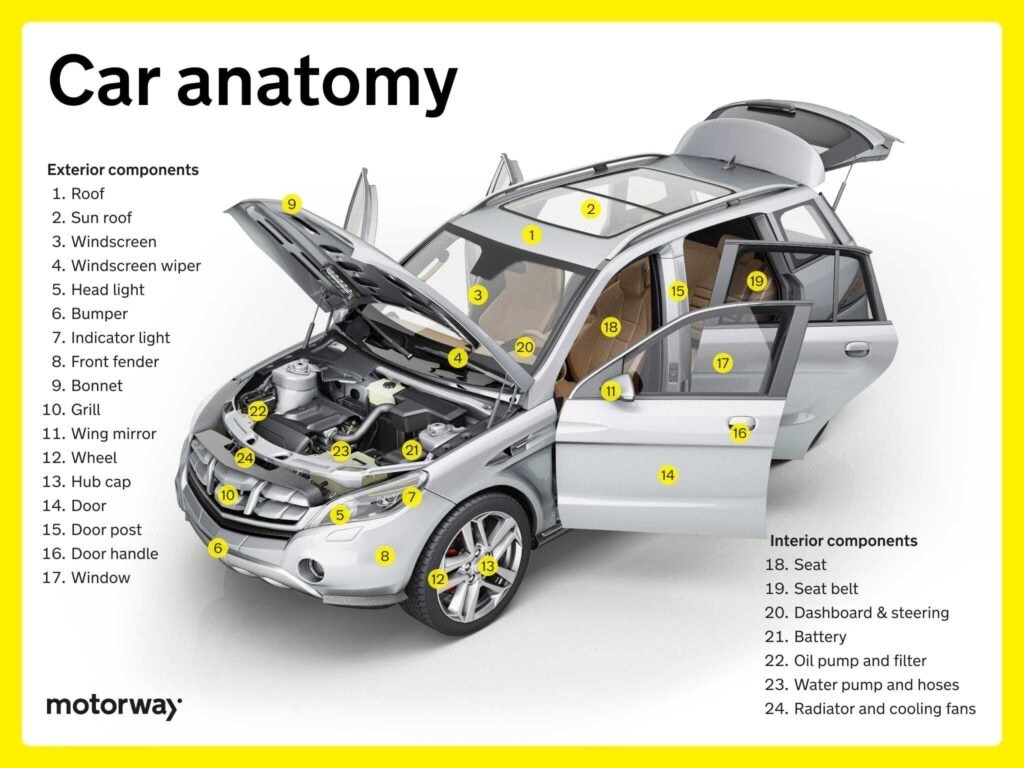
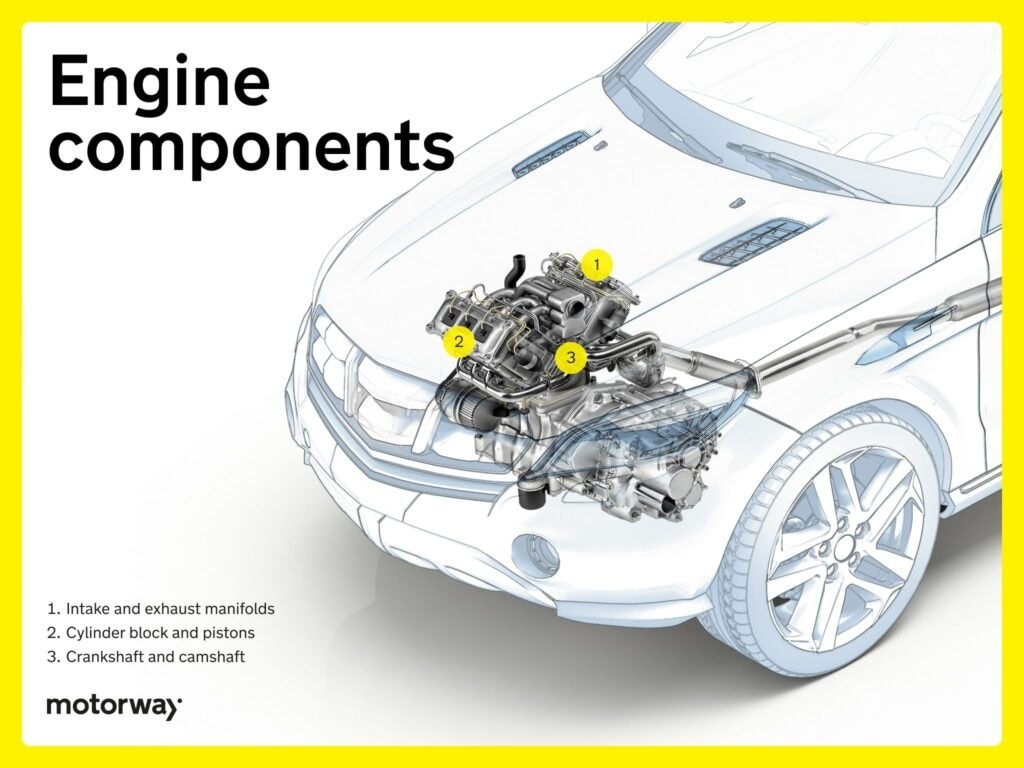
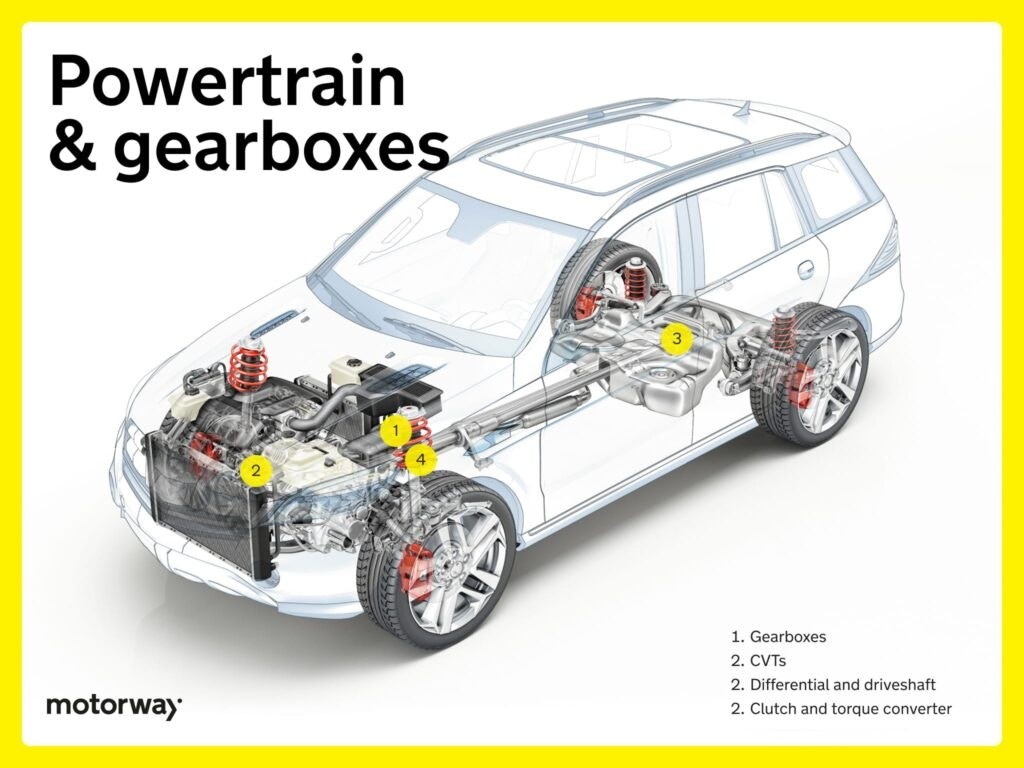
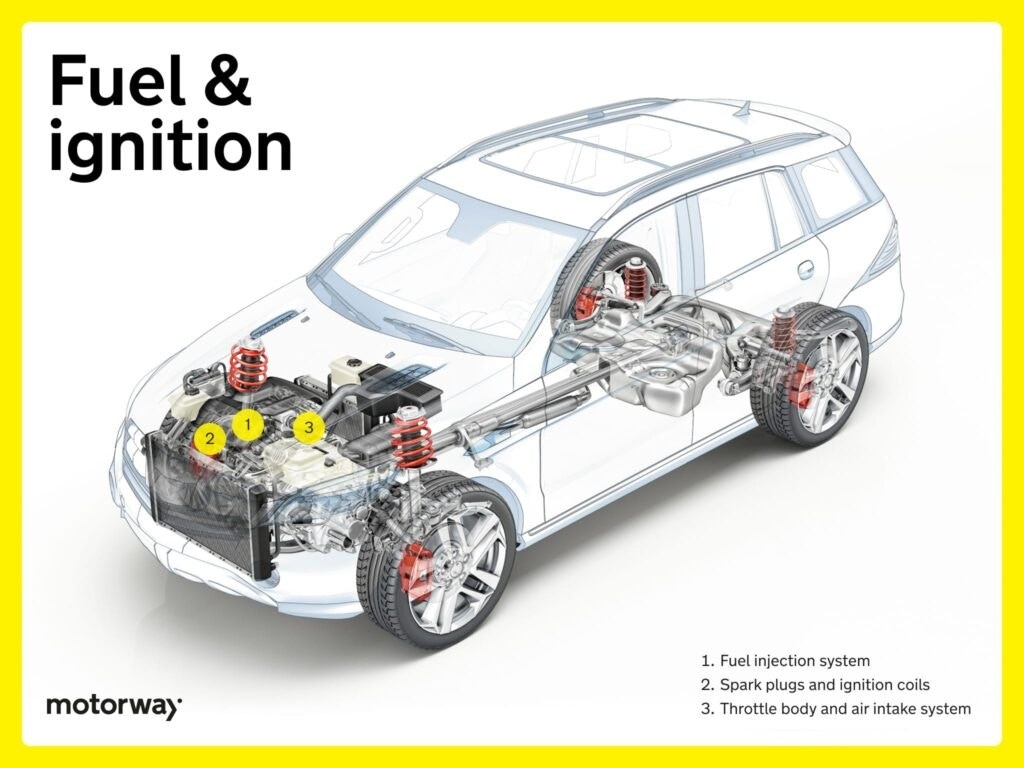
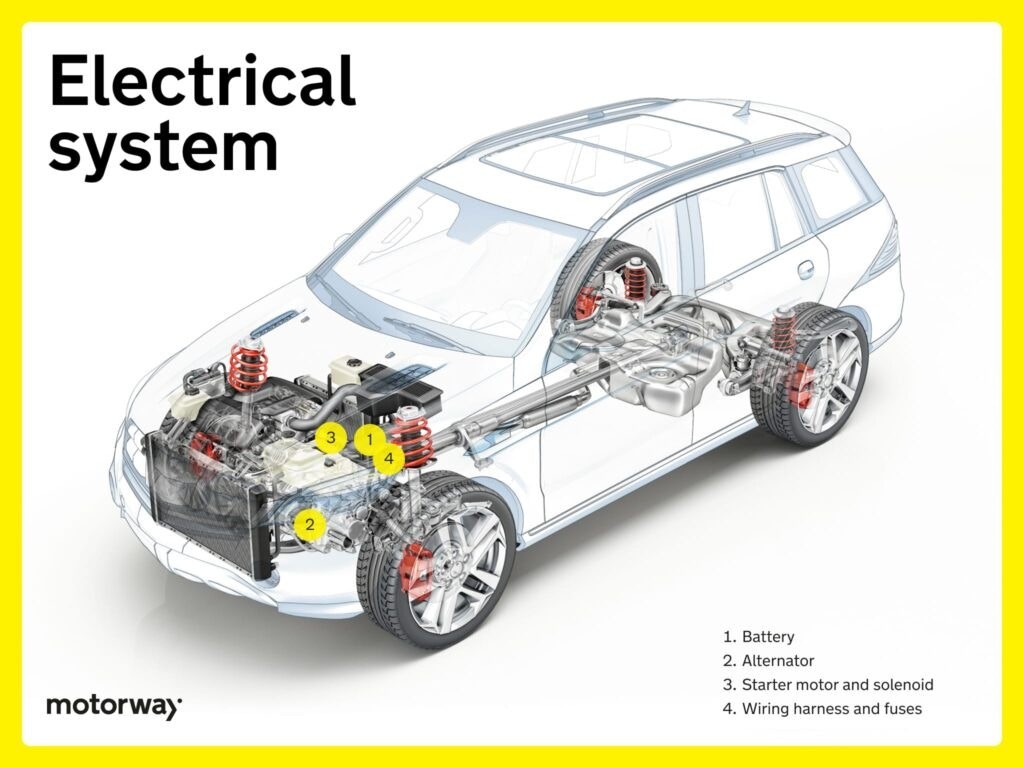
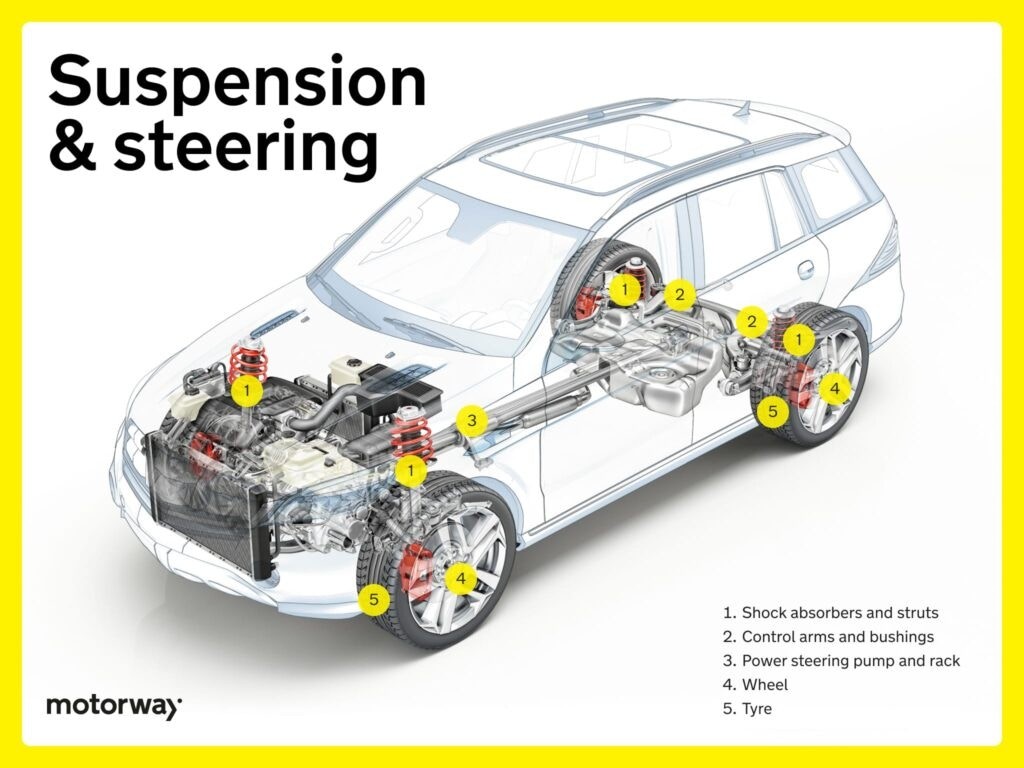
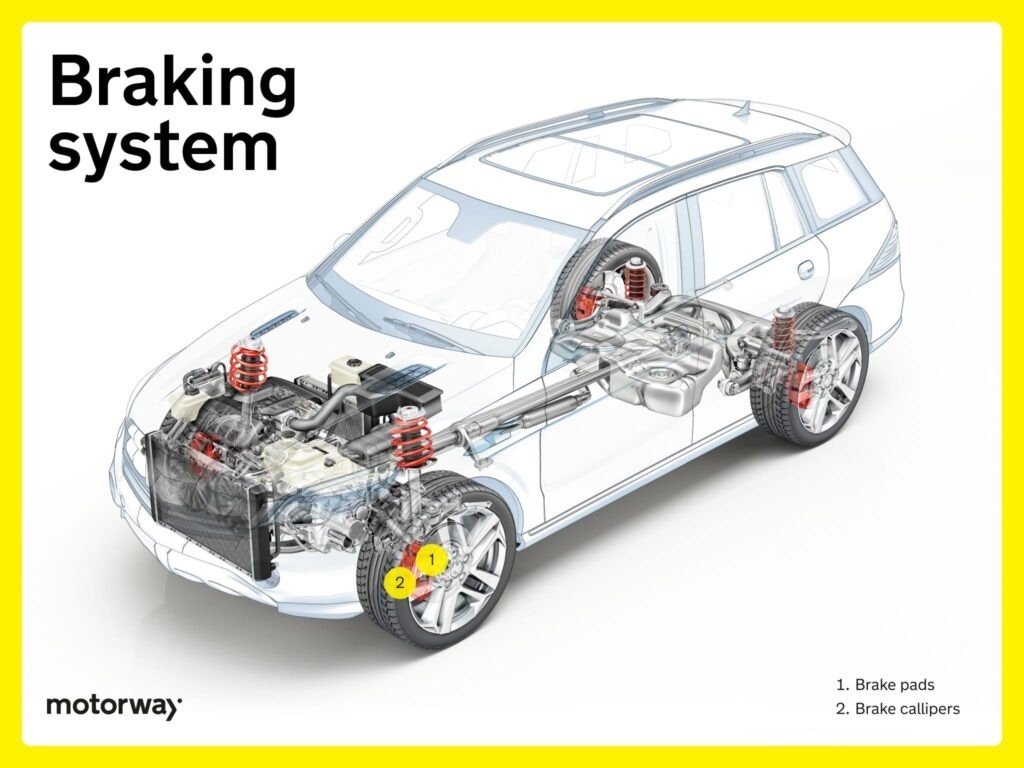
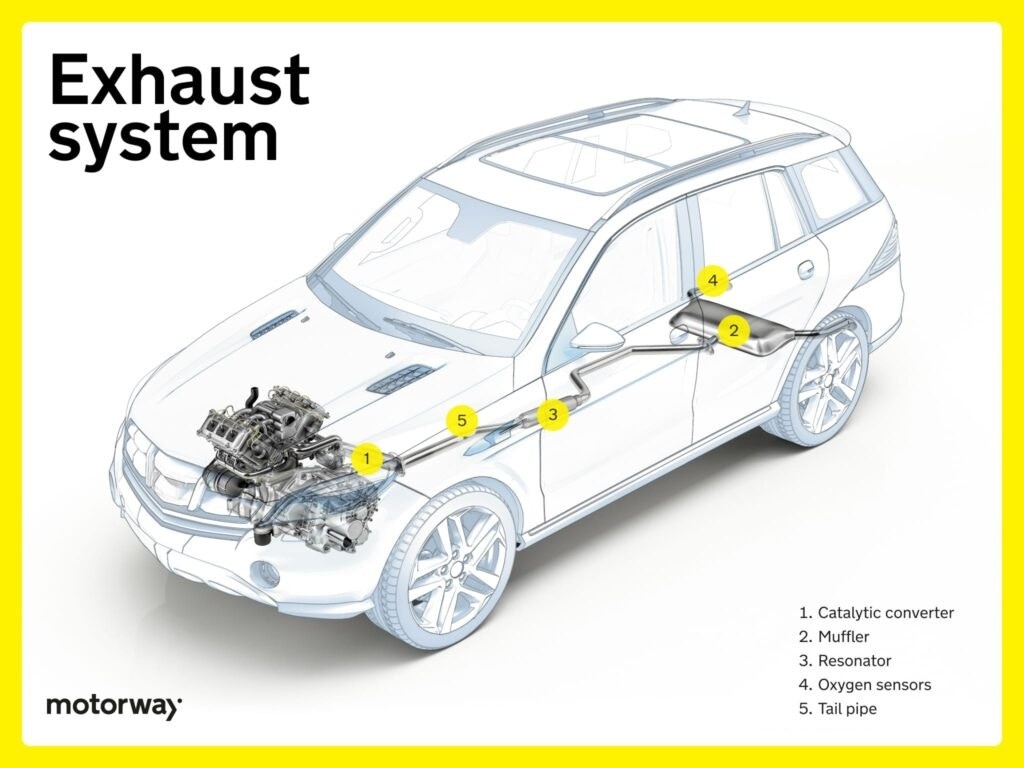
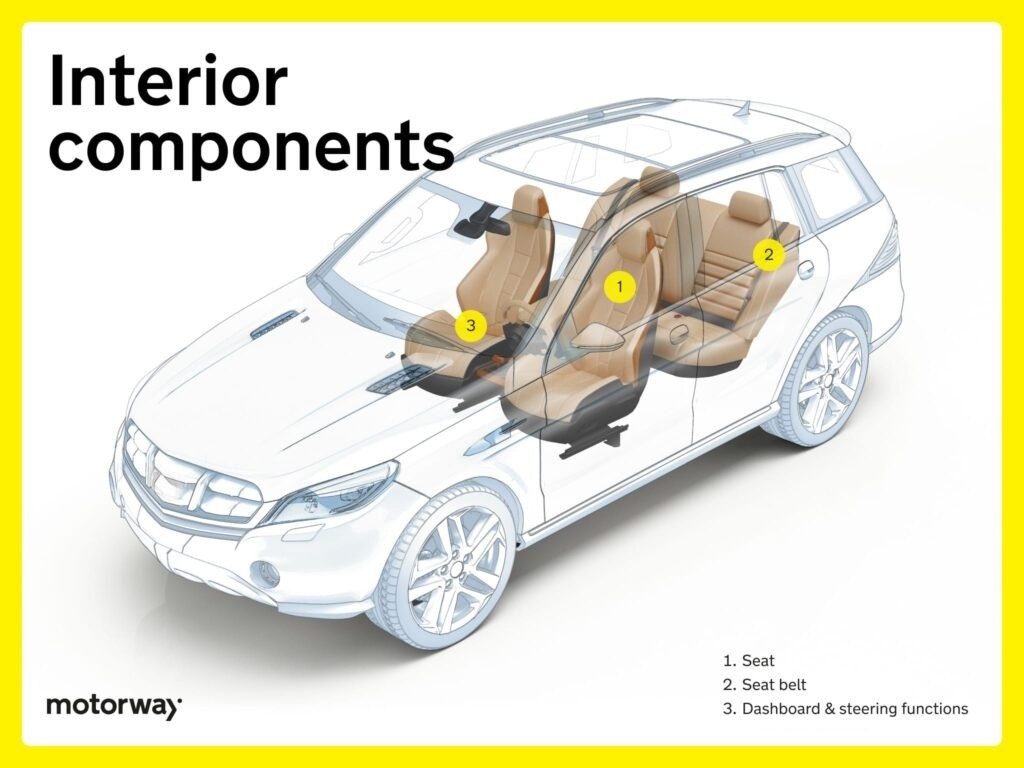
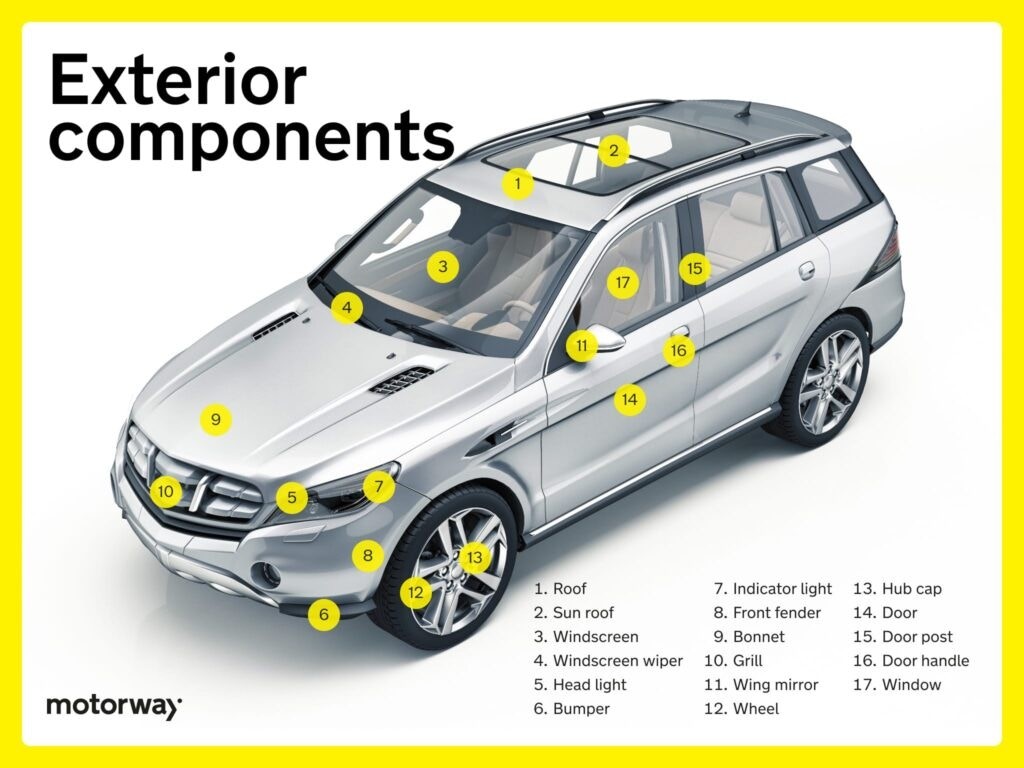
Wheel Construction Guide: Alloy vs. Steel Wheels
When considering wheel construction, several designs are prevalent, each with its own characteristics:
- One-piece construction: In this straightforward design, the entire wheel is manufactured from a single piece of material, typically either alloy or steel. This robust and simple construction is commonly used for both alloy and steel wheels.
- Two-piece construction: This design involves crafting the wheel from two main components: the center section and the outer rim. These two pieces are then joined together, often by bolting or welding. Two-piece constructions are frequently seen in performance-oriented or custom wheels, allowing for design flexibility.
- Three-piece construction: Taking modularity a step further, three-piece wheels are composed of three distinct parts: the center, the outer rim, and an inner hoop. This modular design offers even greater customization possibilities, making three-piece wheels a popular choice in the aftermarket and custom wheel scene.
- Forged construction: Forged wheels are created from a solid block of metal that is subjected to intense pressure. This forging process results in a wheel that is demonstrably stronger and lighter than wheels manufactured using casting methods. Forged wheels are often favored in high-performance and racing applications where strength and weight reduction are critical.
- Multi-piece construction: This versatile approach combines multiple components in the wheel’s construction, often including a central section, an outer rim, and numerous bolts to hold them together. Multi-piece wheels offer significant versatility in terms of sizing, styling, and customization options.
The choice of wheel construction significantly impacts factors such as wheel weight, overall durability, and aesthetic appearance. This allows drivers to select wheels that best align with their performance requirements and personal style preferences. Material choice also plays a role:
- Alloy wheels: Typically made from a blend of metals, most commonly aluminum or magnesium alloys. Alloy wheels are prized for being lightweight, which contributes to improved vehicle handling and better heat dissipation from the brakes. They also often enhance a vehicle’s visual appeal with their styling options.
- Steel wheels: Constructed primarily from steel, steel wheels are known for their robustness and durability. While generally heavier than alloy wheels, steel wheels are cost-effective and particularly well-suited for demanding or rugged driving conditions where durability is paramount.
Tyre Pressure Monitoring System (TPMS): Maintaining Optimal Inflation
The Tyre Pressure Monitoring System (TPMS) is a crucial safety feature integrated into modern vehicles. TPMS continuously monitors the air pressure within each tyre in real-time using sensors installed in each wheel. The system wirelessly transmits this pressure data to the vehicle’s computer. If the tyre pressure in one or more tyres deviates below a pre-set optimal level, the TPMS immediately issues a warning to the driver, typically via a dashboard indicator light. Maintaining proper tyre inflation, as promoted by TPMS, enhances safety, optimizes fuel efficiency, and extends the lifespan of tyres by reducing uneven wear and tear.
FAQs About Car Parts
What parts are under a car?
Beneath a car’s body, you’ll find a collection of critical systems and components. These include the engine, the transmission system that transfers power to the wheels, the suspension system that ensures a smooth ride, the exhaust system for managing emissions, and the fuel system that delivers fuel to the engine. All these systems work together in concert to ensure the vehicle’s overall functionality and performance.
How many car parts are on a car?
The answer to “how many parts on a car?” is surprisingly complex. While the exact number can vary depending on the make, model, and complexity of a vehicle, modern cars can have over 30,000 individual parts. This staggering number encompasses a vast range of systems and components, from the smallest fasteners to major assemblies, highlighting the intricate engineering and complexity inherent in car design and manufacturing. Electric vehicles (EVs) generally have fewer parts compared to traditional internal combustion engine cars. This reduction in part count is primarily due to the simpler nature of electric powertrains, which rely on batteries and electric motors rather than the intricate mechanical systems of a combustion engine.
What are the important parts of a vehicle?
Several parts are considered particularly important for a vehicle’s safe and reliable operation. These include the engine, which provides the power; the transmission, which manages power delivery; the brake system, crucial for stopping; the steering system, for controlling direction; the suspension, for ride comfort and handling; and the electrical components, which power various functions. Each of these systems plays a vital role in ensuring the vehicle’s overall safety, performance, and functionality.
What parts of a car can be sold separately?
Certain car components have value and can be sold separately in the automotive aftermarket. Common parts sold individually include engines, transmissions, various body parts (like doors, bumpers, and hoods), and specific electrical parts (such as alternators and starters). The demand and availability of these parts can vary depending on vehicle make, model, and market conditions. Selling parts separately can offer flexibility for repairs, replacements, or vehicle upgrades.
Why is there a shortage of car parts?
Shortages of car parts can arise due to a complex interplay of factors. Disruptions in the global supply chain, such as natural disasters or geopolitical events, can significantly impact the availability of components. Increased demand for specific parts, perhaps due to rising car sales or specific repair trends, can also lead to shortages. Manufacturing challenges, including factory closures or raw material scarcity, can further constrain part production. Global events, such as pandemics or trade disputes, can exacerbate these issues, affecting both production and international distribution networks, leading to widespread car part shortages.
Considering Selling Your Car?
Do you want to learn more about the various facets of car ownership, including maintenance and the process of selling your vehicle? Explore our extensive collection of guides here. We cover a wide range of topics, from navigating Clean Air Zones to understanding car tax regulations, number plate changes, and part exchange options.
